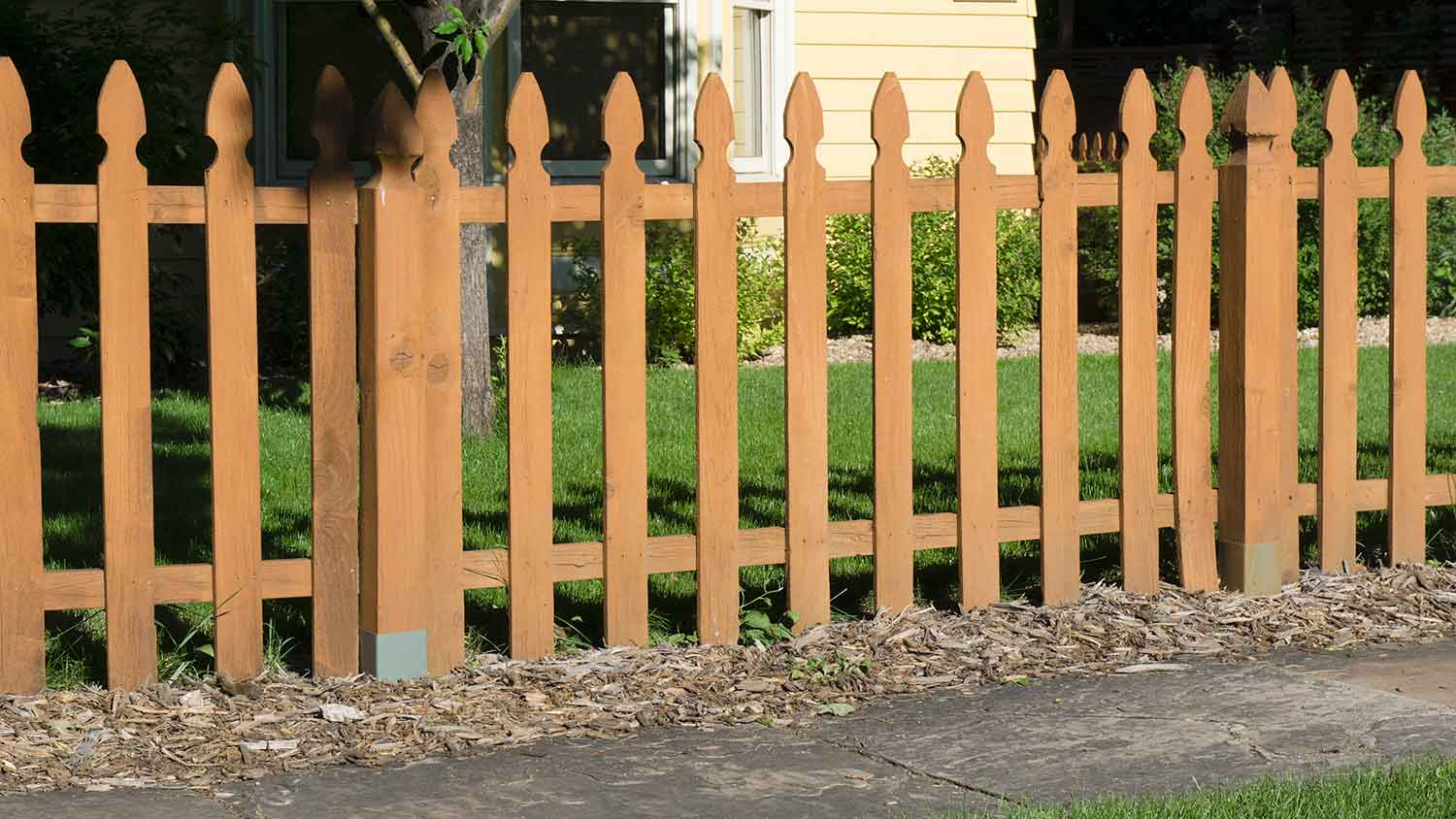How to Stretch a Chain Link Fence: 4 Essential Tips
An appropriate time to pull one’s chain


- Fence come-along
- Fence stretcher
- New fencing, if applicable
Over time, due to weather, wild animals, or other occurrences out of your control, a chain link fence can sag or become loose, making it less effective. Knowing how to properly stretch your chain link fence can help restore it to its original condition, eliminate gaps and sagging, or even add a new section. This step-by-step guide will walk you through the process of stretching your chain link fence—a task that can be completed in less than a day.
Prepping to Stretch a Chain Link Fence
Before attempting to stretch a chain link fence, you should check its condition and decide whether to repair or replace your fence. If your fence is rusty or brittle in any way, stretching it could cause further, irreversible damage, and it might be wise to invest in a new fence rather than stretch an old one in disrepair.
While the average cost to install a new fence is $3,220, the final price will depend on the type of fence you want, as well as the desired length and height of the fence. To get an accurate quote, it’s best to contact a local chain link fence installation pro.
How to Stretch a Chain Link Fence

Two tools—a come-along and a fence stretcher—make stretching a chain-link fence easy.
Secure the Fence to the Starting Post
If the chain link fence you’re stretching is brand new, you should unroll it and secure it to one end of your starting post. If the fence is already installed, you should detach it from all posts except for the starting post—this is the post at the end opposite the part being stretched.
Affix the Come-Along
Attach your fence come-along to an anchor point just past the new post that the fence is attaching to. The anchor point could be another post, another object, or a building. A fence come-along is a hand-operated tool—like a winch—that can be used to apply tension and pull wire fencing taut.
Attach the Fence Stretcher
Place the hooks of the fence stretcher (sometimes called a fence puller) on the chain link fence. The number of hooks you need will depend on the height of your fence. Next, hook the free end of the fence come-along to the fence stretcher.
Stretch the Fence
Once all the components and tools are in place, you can begin cranking the come-along until the chain link fence has been stretched to your desired length. Attach the fence to the newly placed post.
DIY vs. Hiring a Pro
While stretching a chain link fence is a relatively easy project and can be done by a novice DIYer, you should have a chain link fence installation expert near you inspect the fence if you suspect it is in poor condition—stretching a fence that is rusty or otherwise showing significant signs of age can cause additional damage.
Frequently Asked Questions
The main tool you will use to stretch a chain link fence is a fence puller. This tool features a bar with hooks that you can attach to the fence links. The puller, then, under your direction, pulls, extends or contracts the fence links. Fence pullers range in price, generally costing between $30 and $50.
The distance you can stretch a chain link fence depends on the fence’s length and how many links it has. Longer fences will be able to stretch further than shorter ones. Most critically, you should inspect your fence to confirm it is not rusty or brittle before you attempt to stretch it; stretching an aging fence too far can cause it to break.
Chain link fences last 20 years on average, which is five to 10 years longer than wood fences. With proper care and maintenance, your chain link fence could last 30 years. If you purchase a chain link fence with vinyl-coated mesh or galvanized steel, the lifespan could be even longer.















